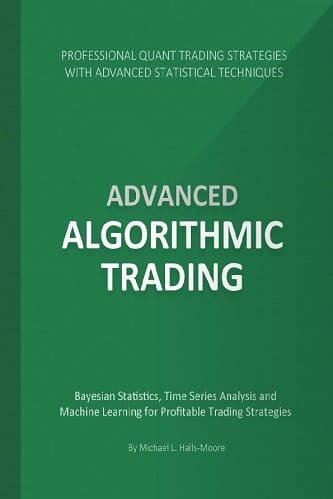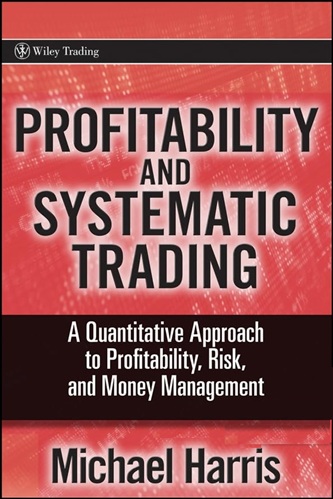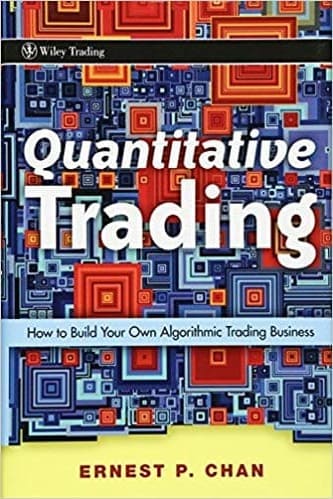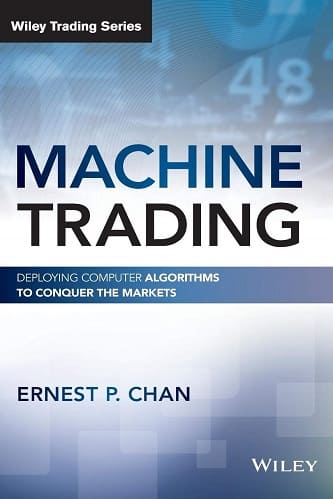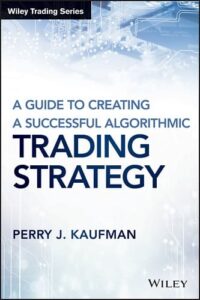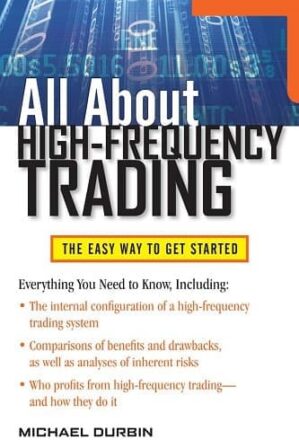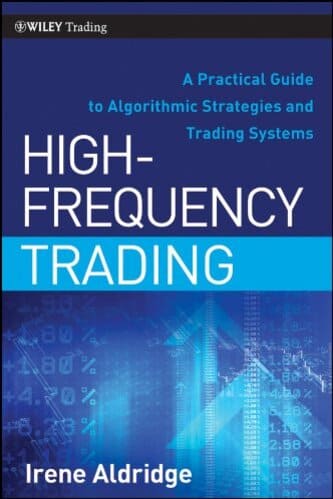Advanced Algorithmic Trading
$20.00
| Author(s) | |
|---|---|
| Format |
|
| Pages |
517 |
| Publication Year |
2017 |
Advanced Algorithmic Trading concentrates on three major areas of mathematical modelling–Bayesian Statistics, Time Series Analysis and Machine Learning–that will augment your quantitative trading research process in order to help you discover sources of alpha. Many of these techniques are in use at some of the largest global asset managers and quantitative hedge funds. In the following chapters these techniques will be described and applied to financial data in order to develop testable systematic trading strategies.
The goal of the quantitative trading researcher is to seek out what is termed alpha–new streams of uncorrelated risk-adjusted returns–and then exploit these returns via a systematic trading model and execution infrastructure. Alpha is diÿcult to find, as by definition once it is well-known it decays and seeks to be an uncorrelated source of returns. Instead it gradually becomes a risk factor and thus loses its risk-adjusted profitability.
Introduction:
In the last few years there has been a significant increase in the availability of software for carrying out statistical analysis at large scales–the so called “big data” era. Much of this software is completely free, open source, extremely well-tested and straightfor-ward to use. The prevalence of free software coupled to the availability of financial data, as provided by services such as Yahoo Finance, Google Finance, Quandl and DTN IQ Feed, has lead to a sharp increase in individuals deciding to become quant traders.
Unfortunately many of these individuals never get past learning basic “technical analysis”. They avoid important topics such as risk management, portfolio construction and algorithmic execution–topics given significant attention in institutional environments. In addition “retail” traders often neglect more e˙ective means of generating alpha, such as can be provided via detailed statistical analysis.
The aim of Advanced Algorithmic Trading is to provide the “next step” for those who have already begun their quantitative trading career or are looking to try more advanced methods. In particular the book will discuss techniques that are currently in deployment at some of the large quantitative hedge funds and asset management firms. Our main area of study will be that of rigourous statistical analysis. This may sound like a dry topic, but rest assured that it is not only extremely interesting when applied to real world data, but also provides a solid “mental framework” for how to think about future trading methods and approaches.
Statistical analysis is a huge field of academic interest and only a fraction of the field can be considered within this book. Trying to distill the topics important for quantitative trading is diÿcult. However three main areas have been chosen for discussion:
- Bayesian Statistics
- Time Series Analysis
- Machine Learning
Advanced Algorithmic Trading is broadly laid out in four sections. The first three are theoretical in nature and teach the basics of Bayesian Statistics, Time Series Analysis and Machine Learning, with many references presented for further research. The fourth section applies all of the previous theory to the backtesting of quantitative trading strategies using the QSTrader open-source backtesting engine.
Contents:
- Introduction To Advanced Algorithmic Trading
- Introduction to Bayesian Statistics
- Bayesian Inference of a Binomial Proportion
- Markov Chain Monte Carlo
- Bayesian Linear Regression
- Bayesian Stochastic Volatility Model
- Introduction to Time Series Analysis
- Serial Correlation
- Random Walks and White Noise Models
- Autoregressive Moving Average Models
- Autoregressive Integrated Moving Average and Conditional Heteroskedastic Models
- Cointegrated Time Series
- State Space Models and the Kalman Filter
- Hidden Markov Models
- Introduction to Machine Learning
- Supervised Learning
- Linear Regression
- Tree-Based Methods
- Support Vector Machines
- Model Selection and Cross-Validation
- Unsupervised Learning
- Clustering Methods
- Natural Language Processing
- Introduction to QSTrader
- Introductory Portfolio Strategies
- ARIMA+GARCH Trading Strategy on Stock Market Indexes Using R
- Cointegration-Based Pairs Trading using QSTrader
- Kalman Filter-Based Pairs Trading using QSTrader
- Supervised Learning for Intraday Returns Prediction using QSTrader
- Sentiment Analysis via Sentdex Vendor Sentiment Data with QSTrader
- Market Regime Detection with Hidden Markov Models using QSTrader
- Strategy Decay
Advanced Algorithmic Trading By Michael Halls Moore pdf

